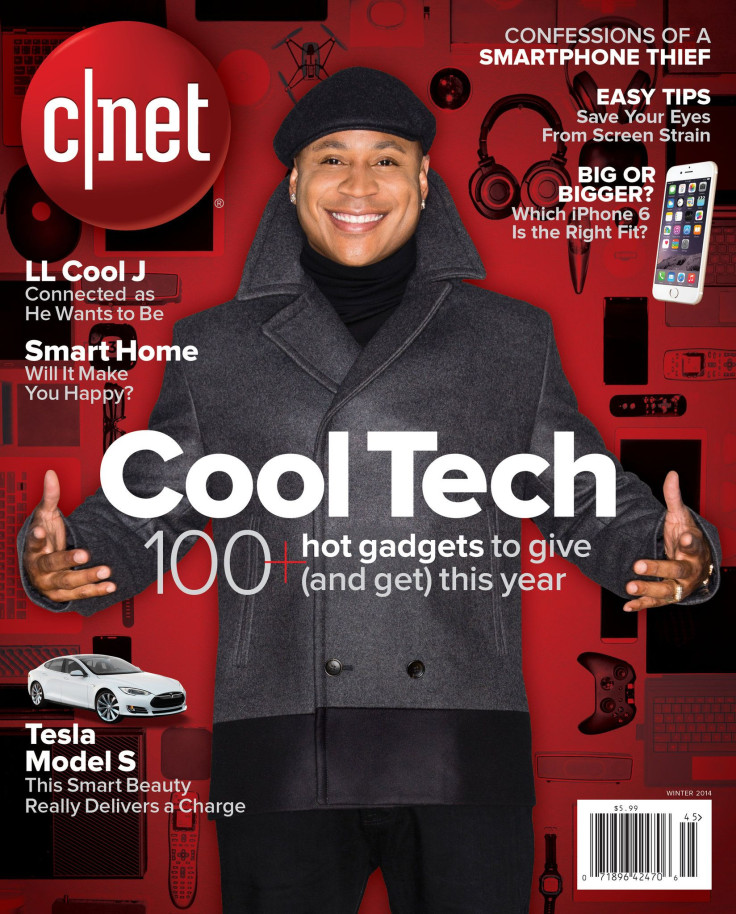Digital News Outlet CNET Gets All 'IRL' With Print Magazine Launch

The common-sense money says print media is dying, yet here comes Internet-based news outlet CNET to launch its own physical ink-and-paper magazine.
"I'm pretty sure you don't need me to elaborate on the challenges facing print," said Lindsey Turrentine, co-editor-in-chief of the new CNET Magazine, which hit newsstands Monday. "The difference here is that CNET is a 20-year-old brand that's been very successful. The interesting thing about doing it this way is that we're not trying to drag print into digital. By starting with digital, a move into print is expansion."
CNET Magazine, a quarterly, will retail for $5.99 at all the usual outlets. The first issue landed Monday with LL Cool J on the cover. Stories will range from thought-leader profiles to hands-on solutions to thorny tech challenges, the company says. CNET will move 200,000 copies and says all the content between its covers will be original and specific to the magazine, rather than being reappropriated from CNET's websites.
"The future for this brand is multiplatform," said Jim Lanzone, president and chief executive of CNET parent company CBS Interactive. "We know the audience wants to experience CNET in multiple ways. This is a project we talked about for a number of years, and it got momentum in 2013, the best year in the history of CNET."
New magazines generally face long odds, as the long-term failure rate can be as high as 90 percent, according to studies by industry-watcher Samir Husni. But insiders say CNET may have found a niche. "In this particular case, I’ll give CNET the credit that they recognized the opportunity to put content in front of their customers in a way that hadn’t previously existed in their brand portfolio," said John Lisko, executive communication director for advertising agency Saatchi & Saatchi. "There aren't many competitors in the space for tech-based lifestyle publications."
Turrentine agrees: "I don’t think there’s a direct competitor to the magazine. Wired is probably a little less accessible. We like to think we're a cross between Wired and Lucky."
This online-going-offline approach is indicative of a larger trend seen elsewhere. Hypochondriac playground WebMD has also launched a print magazine of its own, while International Business Times parent company IBT Media restored Newsweek to print in March. Online clothing retailer Bonobos set up a physical retail store, and noted YouTube channel AwesomenessTV has kicked off its own book imprint for young adults.
CNET's rate base guarantees that 200,000 people will see the ads inside the magazine. Advertisers looking to buy a one-time, four-color full-page ad will spend $40,000 to do so. The back cover can be had for $50,000. Advertisers touted in this first issue include major brands such as AT&T, Gillette, Hewlett-Packard, TiVo and Toyota. An ad also appears for Walter Isaacson's book "The Innovators," published by Simon & Schuster, which shares a parent company with CNET -- CBS Corp.
"They're doing flat-rate advertising at this point. They don't have enough history to price properly, so they don’t know what’s working for them. Their cost per thousand is high comparatively," said Randy Freisner, director of media operations at the Martin Agency. "They’re testing costs right away. Since it's a finite audience, I think they can get away with it."
"It's clear that CNET is trying to give itself another platform and way to expand the brand. They're not starting up a magazine cold with no following, and making it a quarterly release minimizes risk. Depending on reception, they can cut it to twice a year or make the move to six issues a year. It's dipping a toe in the water," said Freisner.
"The pace is right for us," said Turrentine. "We're just getting started and we want to make sure every issue we publish is full of the best content we can give it."
© Copyright IBTimes 2025. All rights reserved.




















